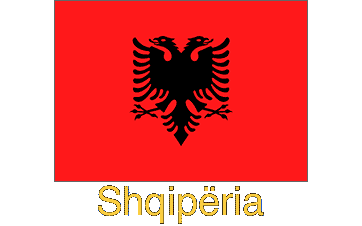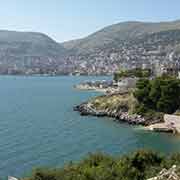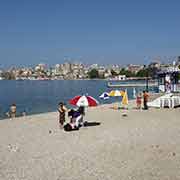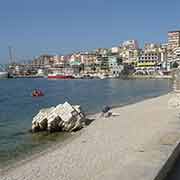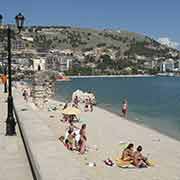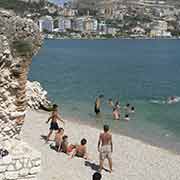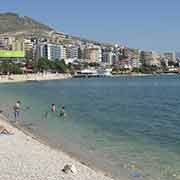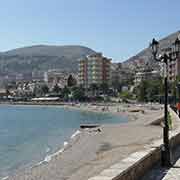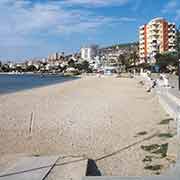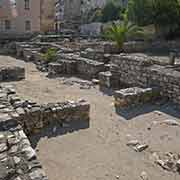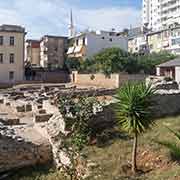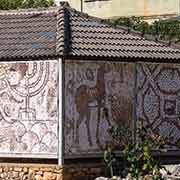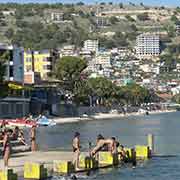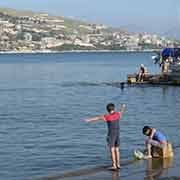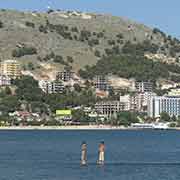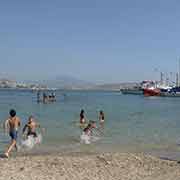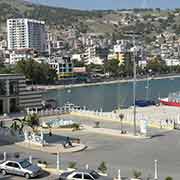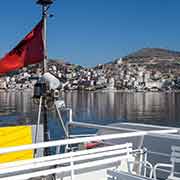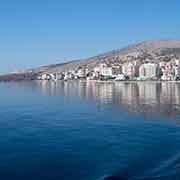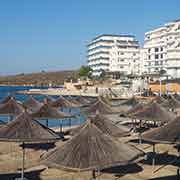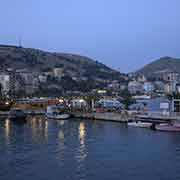Photos from Albania
Saranda, southern city on the Ionian Sea
Saranda (or Sarandë in a sentence with a preposition) is a lovely town on the Ionian sea, with the Greek island of Corfu only 12.5 kilometres away on the horizon. It has a population of about 32,000 inhabitants and has become an important tourist destination with an attractive beach along its open bay. There are a few sights in the town itself, like the ruins of a 5th Century synagogue complex, but its main attraction is its location and climate.
you may then send it as a postcard if you wish.
The town’s name derives from the Greek Άγιοι Σαράντα (Agioi Saranda), the name of a Byzantine monastery meaning “Forty Saints”. In the early 20th Century, it was also known by its Italian translation “Santi Quaranta”. When the Albanian state received its independence in 1912, Saranda became part of it the following year. But shortly afterwards, on 28 February 1914, it was occupied by insurgents of the “Autonomous Republic of Northern Epirus”, a short-lived, self-governing state founded by Greeks living in southern Albania in the aftermath of the Balkan Wars. In 1916 the town was occupied by Italians; on 23 June 1917, they established an Italian Protectorate over Albania that lasted until summer 1920. In 1939 Saranda was again occupied by the Italians and briefly called “Porto Edda” in honour of Fascist leader Benito Mussolini’s eldest daughter. Italy annexed Albania, and the town once more was called by its Italian name “Santi Quaranta”, Forty Saints. But in late 1940, the Greek army, during the short Greco-Italian war, occupied a large area of southern Albania, and the city remained under Greek rule until the German invasion of Greece. After the war, it reverted to the Albanian government and was called Saranda once more. There is still a significant Greek minority living in the city.


